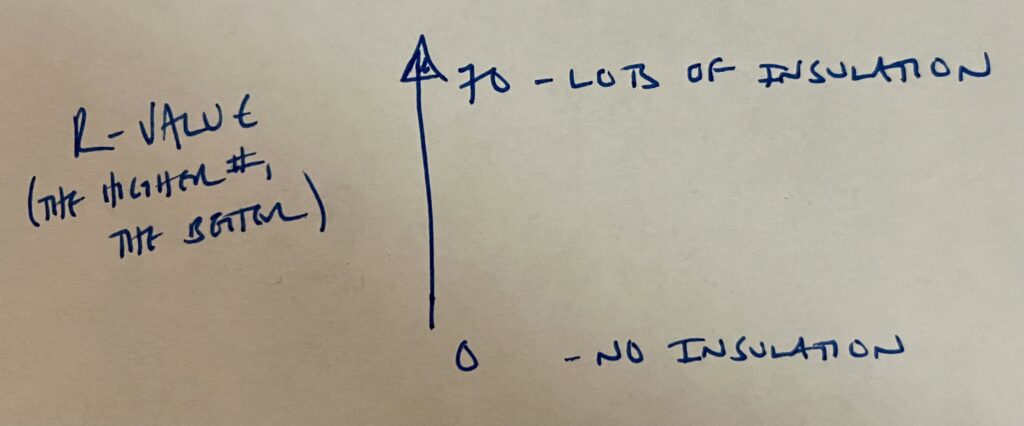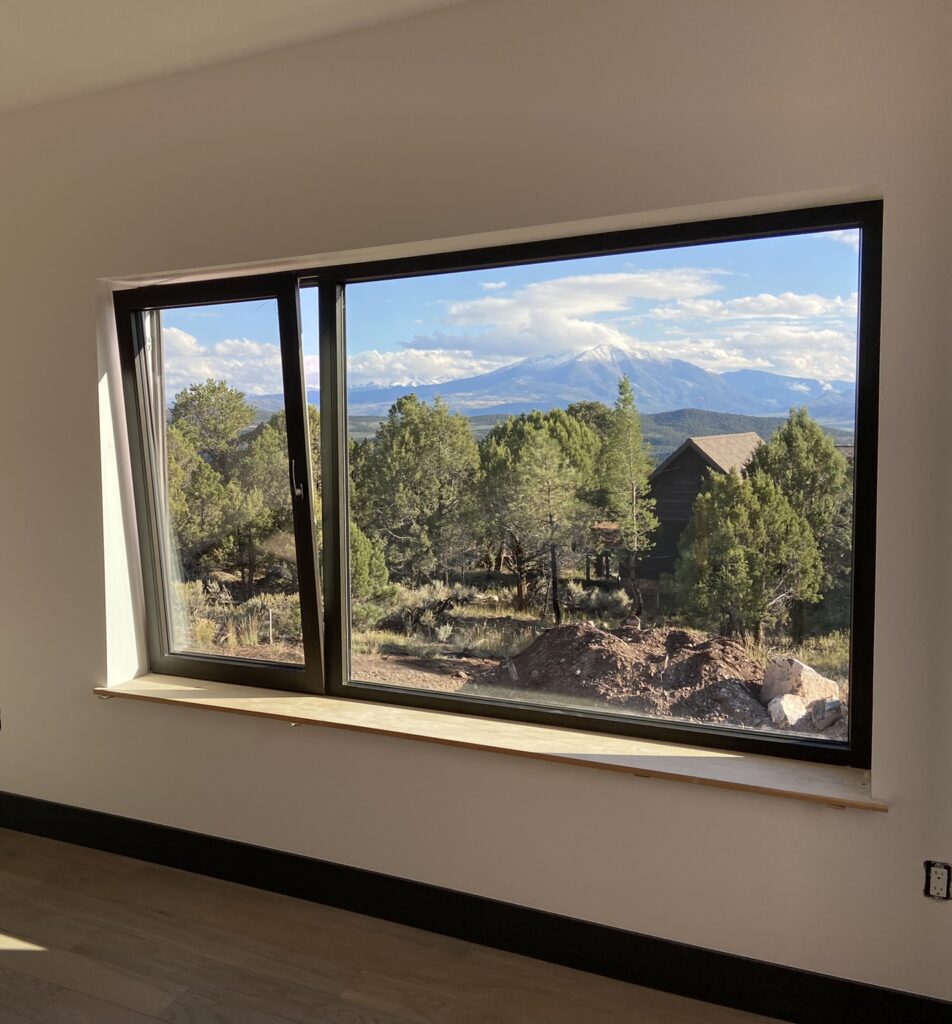Why invest in windows? Well, windows are basically holes in your wall that attempt to block air flow. If you have insulation in your walls and care about indoor comfort, you should definitely spend a little more money for that “nicer” window. Therefore, you can go from a simple hole in your wall to something that would resemble a nice, clear, insulated windbreaker.
Here’s some quick numbers to run by ya…
A house built to the 2015 energy code (IECC) in Denver will have an r-value (which is basically the capacity of a material to resist heat flow) of 20, and a code compliant window equivalent to an r-3.125. Note that the higher the r-value, the better that material is at insulating. Those numbers indicate that your walls have SIX TIMES the insulating value of the window!
Just to be confusing, a window is actually listed using a “u-value”, which is the inverse of the r-value. This u-value is the measure of heat loss, and the lower the number, the better that window is on the energy efficiency scale. Remember that the walls and ceilings (and other assemblies) of the house will have an r-value, which is the measured resistance to heat flow.


Therefore, a 2015 code-compliant window will have a u-value of 0.32. The inverse (or r-value) of this number is 3.125, as mentioned above. Alpen Windows, in Louisville, CO, has affordable windows that have values around the 0.15 range.
On the YCH build, we used the Alpen Tyrol Tilt and Turn windows, which have a u-value of 0.15 and is basically twice as energy efficient as a code minimum window, and not twice the cost.

If you’re in a warmer climate (zones 1-3), you’ll want to pay attention to the SHGC, which is the solar heat gain coefficient of the window. This is the window’s ability to prevent solar heat gain, while still providing a view. Like the u-value, the lower the number, the better; i.e., the lower the number, the lower amount of heat gain that window will have.
There’s a really great blog post here by AE Building Systems that hits home the fact that you should be investing in your windows, so check it out!
Information on tax incentives for upgrading your windows can be found here on the Energy Star website.

